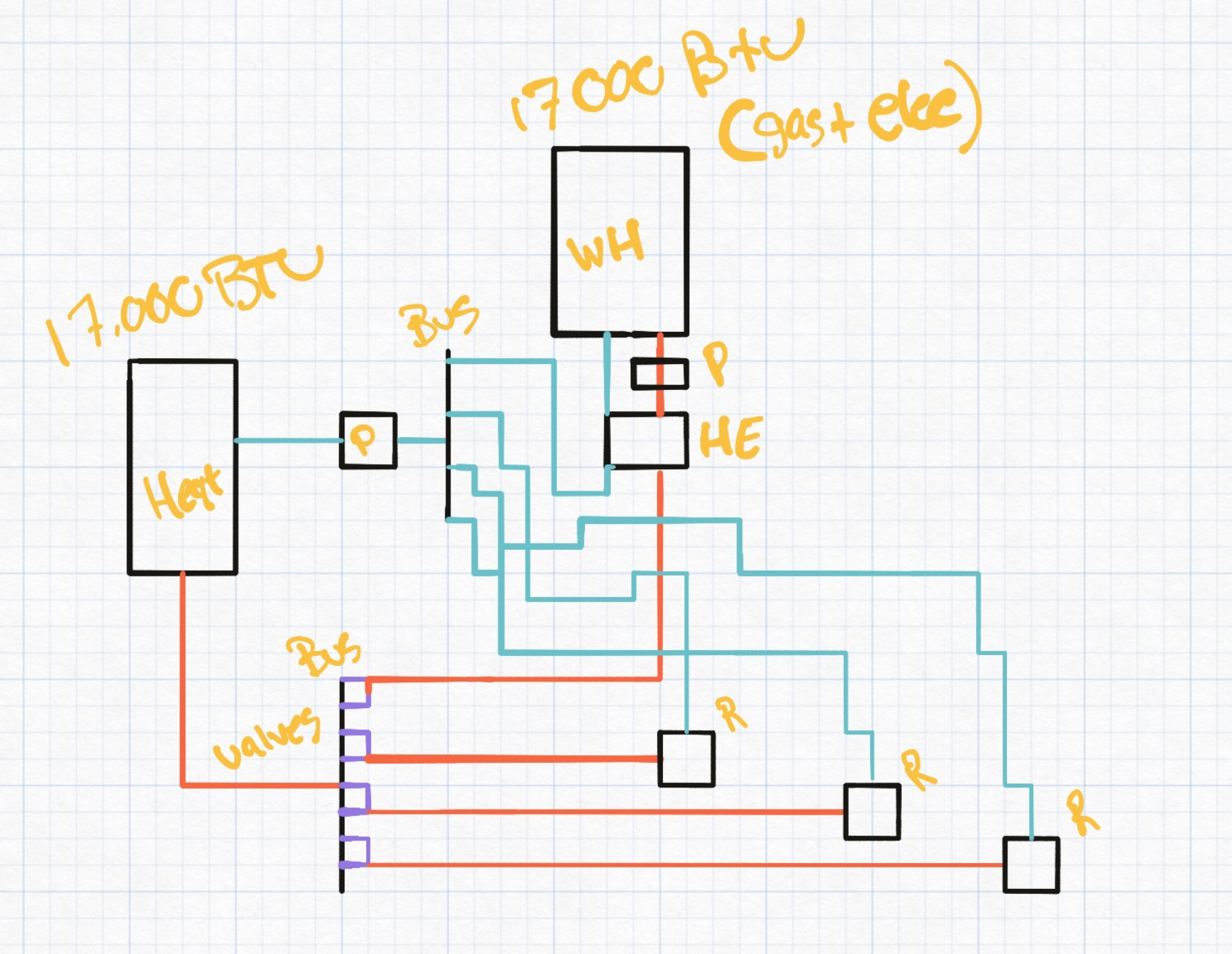I’ve always had a bone to pick with propane. With costs hovering around $7 a gallon (considering a 15lb tank exchange priced at $25/bottle), its energy density only reaches 60% of what diesel offers. As an added note, I’ve also installed a heat pump.
Energy Content & Efficiency:
- Propane: Roughly 91,500 BTU/gallon
- Diesel: Around 137,380 BTU/gallon
- Heat Pump:
- Capacity: 12,000 BTU/hr
- Efficiency: HSPF of 9.0
Cost Breakdown:
- Propane: $7.05/gallon (based on the 15lb bottle exchange rate of $25~ locally)
- Diesel: $4/gallon (or less if you find off road diesel)
- Heat Pump: Runs on electricity priced at $0.13/kWh
Given a daily heating requirement of 60,000 BTUs for an RV, we can factor in different operational times based on external temperatures:
- Warmest 8 hours (around 50°F): 25% operation
- Transitional 8 hours: 50% operation
- Coldest 8 hours (close to 30°F): 75% operation
This culminates in a monthly requirement of roughly 1,800,000 BTUs.
Efficiency of Various Heaters:
- RV Propane Furnace: 85%
- 5kW Hydronic Diesel Heater: 90%
Monthly Costs:
- Propane (Using an RV Propane Furnace):
- Consumption: 25.69 gallons
- Cost: $181.12
- Diesel (With a 5kW Hydronic Heater):
- Consumption: 14.56 gallons
- Cost: $58.23
- Heat Pump:
- Energy Consumption: 480.00 kWh
- Cost: $62.40
Drawing Conclusions: When evaluating the monthly heating costs for an RV under varying temperatures (peaking at 50°F and plummeting to 30°F), diesel, especially with a hydronic heater, stands out as the most economical choice. The heat pump is a close runner-up. Propane, however, especially when used in a standard RV furnace, proves to be a pricier alternative.
From personal experience, propane has its challenges. Fixed tank systems can be cumbersome, and the quest for a refill location can be taxing. More frustratingly, propane refills often become impossible during peak winter months—just when you need them the most—because the equipment freezes.
Then there’s the matter of safety. Propane’s flammability and the idea of storing it in pressurized tanks on vehicles unsettle me. Even though these tanks meet DOT standards, in case of a mishap, I’d much prefer a diesel spill over a potential tank explosion.
When it comes to sheer convenience (and if electricity access isn’t an issue), heat pumps are a winner. They’re efficient, especially in summer, and can function even in freezing temperatures. However, be wary of defrost cycles at temperatures around 20°F, as they can compromise comfort, especially in poorly insulated RVs. Speaking from an unforgettable experience during the bomb cyclone—with its chilling -50°F wind and fierce 50MPH gusts—this is a vital consideration.
A word of advice for those considering installing a heat pump in their RV: steer clear of placing a 12,000 BTU unit in a confined space like an RV bedroom. The unit, when cycling, can cause significant temperature swings, leading to discomfort. If I were to redo my setup, I’d opt for a 9,000 BTU unit in the bedroom and reserve the larger unit for more spacious areas like the living room.
On the horizon for me is a DIY Hydronic heating system for my RV. This project will encompass a diesel coolant heater, car heater cores, ESP32-controlled fans, and a heat exchanger for warm water. Additionally, I’ll be able to use the stock hot water heater to warm the coolant loop when electricity is available, thanks to the two-way operation of heat exchangers.
The easiest install is a typical air exchanger diesel parking heater and I have one in the old RV that went through the bomb cyclone. You could literally feel the air drafts in the RV during the bomb cyclone and the little 5kW unit kept us alive (not that we didn’t have a house to go into if needed). It ran constantly and kept the RV around 65F at full blast. We did experience diesel gelling and had to switch to Kerosene, however, and I also experienced a metering pump failure due to running it dry (I had setup an auto-retry loop to force the heater to re-ignite after a flame out when the fuel was gelling).
The reason I wish to go with the more complicated setup of the hydronic heater is hot water without propane and multi-zone heating as this Travel Trailer has a discrete closing door bedroom and I also wish to heat the enclosed underbelly to help prevent pipes freezing. Not running the stock propane furnace leads to frozen pipes as a duct is ran to the underbelly.
I could also just install two 2kW air exchange parking heaters, well, three considering the underbelly. One for the bedroom, one for the living, one in the underbelly space (and I may end up needing to put one in the underbelly anyway if the hydronic can’t cut it). I found that running a 5kW unit is overkill most of the time and it’ll run at idle more often than not, encouraging soot fouling. Heck, I may even just install my spare 5kW I already have in the living as a backup period.
Anyway, more details to follow!

Leave a Reply